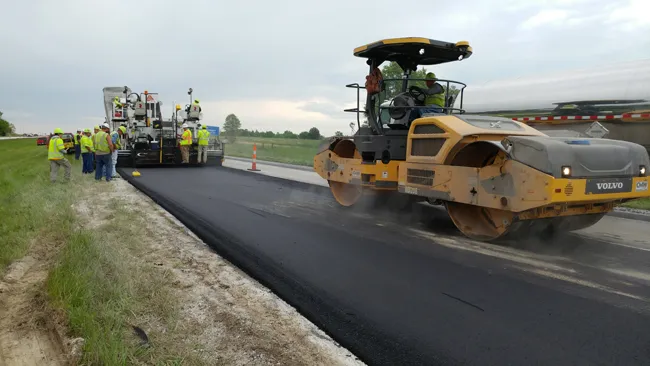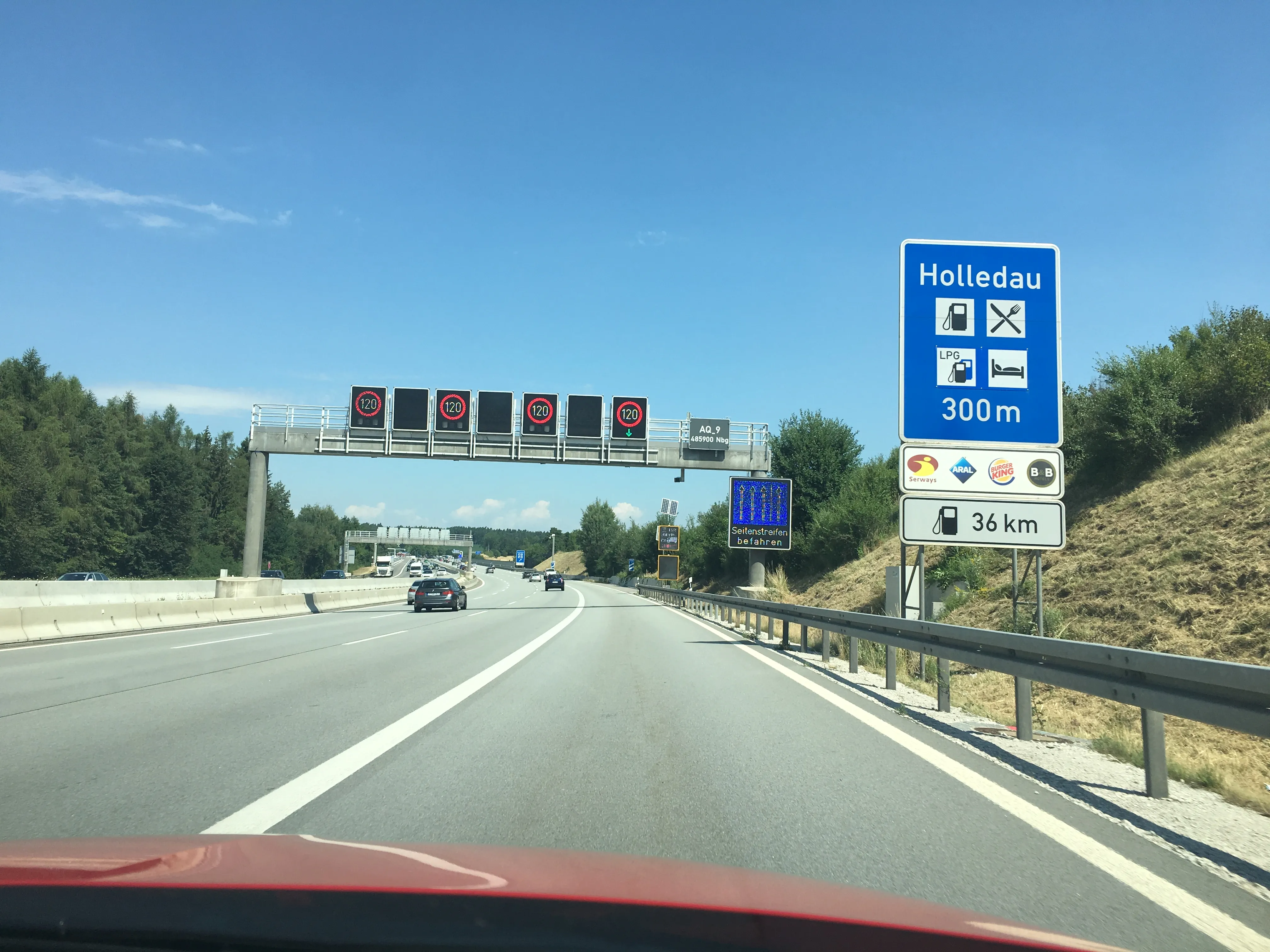
The
“We were looking for ways to assess quality in asphalt projects,” said Bill Stone, research administrator at MoDOT. “We are working towards better pavements that last longer and assessing the placement and monitoring of those pavements. We felt IC and IR could benefit us.”
IC is a roller-based technology to measure roller passes, compaction temperatures, and stiffness of compacted materials in real time. IR, also known as paver-mounted thermal profiling (PMTP), is mounted on the paver to collect thermal profiles behind the paver screed.
Both technologies allow for the real-time detection of paving and compaction issues so paving crews can adjust the operation to improve the final pavement quality. Using IC and IR improves construction quality control (QC) and efficiency to make pavements last longer and to reduce maintenance costs.
“Using IC in the field gave us a better level of confidence that the mat was being rolled properly,” said Stone. “This way we get a much better view of how the pavement is being placed and compacted compared to the old way of testing cores here and there.”
MoDOT’s IC-IR project ran from January to December 2017 and consisted of 13 field projects across Missouri.
Capital Paving and Construction worked with MoDOT on four of the 13 IC-IR field projects; a 32km stretch of Route 52 in Morgan County, two sections of Route 24 in Randolph and Chariton counties for a total of 32km, and a 32km stretch of Route 5 in Cooper County. The projects were Capital Paving and Construction’s firsts using IC-IR technology. The contractor found the real-time results of the paving temperatures and roller coverage helped improve its operations.
“Instead of taking a small, random sample, which takes time to test and get the information we need to receive QC results, the IC-IR information allowed us to make changes to our operation faster, and in return produced a better product sooner,” said Marli Hayes, assistant project manager at Capital Paving and Construction. “Even on other projects where IC-IR technology was not required, the roller operators requested to keep the IC system running to use the roller mapping to help achieve consistent rolling patterns.”
Hayes also said, from a project manager standpoint, using Veta software was very beneficial. “The direct-download-from-the-cloud feature in the Veta program allowed me to log-in remotely to see real-time results, and I wouldn’t have to contact field personnel to get an update on the project,” said Hayes.
The use of IC and IR has been increasingly adopted by state departments of transportation across the country. The cost of IC and IR technologies is just a fraction of the cost of the project - and made even more affordable with retrofit technology - but many agencies don’t see success with IC-IR without the proper training and support.
“We knew from previous experience that just one IC project has a considerable amount of data and info which can be challenging to manage,” said Stone. “With this IC-IR program that contained multiple field projects, we knew we would need support to get our program started.”
One of the very first things MoDOT looked at was finding a set of protocols to standardise how contractors collect and store project data. With 13 projects and eight different contractors, standardised data exchanges were a key to success. Transtec helped set up an exchange protocol through the MoDOT SharePoint to keep data manageable and consistent between projects and helped develop a checklist to ensure protocols were followed by everyone involved.
“Transtec was there and available quite readily and was very accommodating to assist with training and support for the IC-IR program,” said Stone. “We would not have been able to manage the projects without the assistance of Transtec, with the staffing levels we have.”
Hayes said that since IC-IR were new technologies for Capital Paving and Construction, the firm would not have had successful projects without Transtec’s guidance.
“It is one thing to learn about how to do something in a classroom setting, but until you actually get everything set up and going down the road, it’s hard to really understand and get things to work correctly,” said Hayes. “Transtec bridged the gap from taking the information in the classroom to applying it to field, and really understanding the IC-IR programs in a useful way.”
The data from the 13 field projects show that using IC and IR improved construction quality. Complete results are detailed in MoDOT’s Intelligent Compaction and Infrared Scanning Projects Final Report. Because of the success of the projects, MoDOT has committed to fully implementing IC by 2021.
“The demonstration projects taught us that IC is very doable,” said Stone. “We believe that by using IC for projects, we’ll have a better way to work with contractors on getting appropriate coverage.”
IC and IR work independently of each other, so other DOTs and contractors interested in using the technology don’t necessarily need to invest in both. But using IC and IR together results in the most improvement to paving projects.
“Our recommendation is to use both IC and IR,” said Dr George Chang, Transtec’s director of research and leader of support for the IC-IR demonstration project. “Leveraging both technologies on the same project can really enhance the quality. The technologies complement each other.”
MoDOT received Accelerated Innovation Deployment (AID) funding for the demonstration project. The FHWA’s AID grant program provides funding to reduce the risk of trying an innovation and to accelerate the implementation and adoption of the innovation in highway transportation.
Veta is a map-based software tool for viewing and analysing data from IC machines and PMTP/IR scanners. Veta is free to download and is required in FHWA and AASHTO PP80 and PP81 specifications.The Transtec Group developed Veta with support from the FHWA and the Minnesota Department of Transportation.
Currently, the Transportation Pooled Fund (TPF) study, “TPF-5(334) Enhancement to the Intelligent Construction Data Management System (Veta) and Implementation” is leading the effort for enhancing and maintaining Veta to facilitate national implementation of IC-IR and other intelligent construction technologies.









